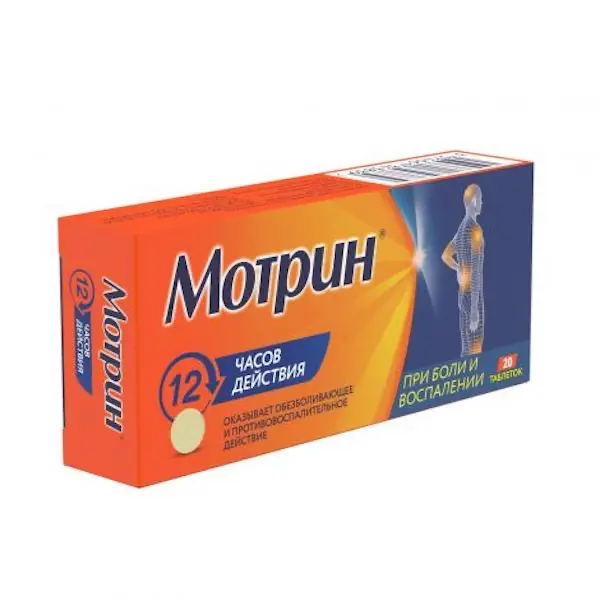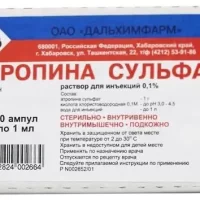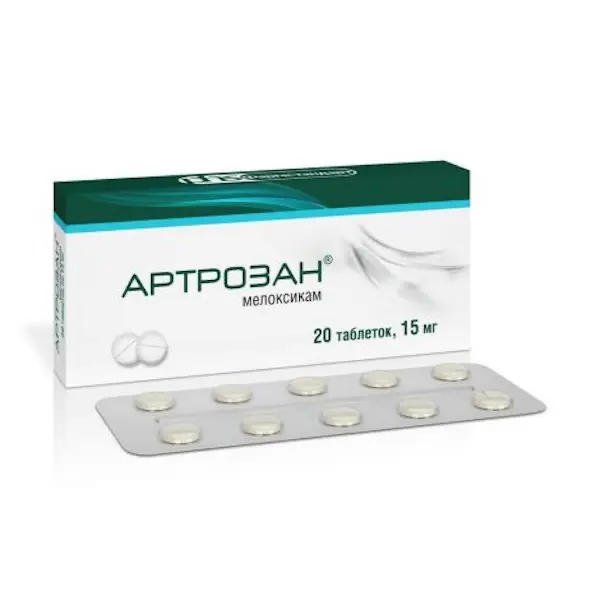Description
Motrin Pharmacodynamics
Non-steroidal anti-inflammatory drug (NSAID), has anti-inflammatory, analgesic and antipyretic effects associated with non-selective inhibition of cyclooxygenase 1 and cyclooxygenase 2 activity, regulating the synthesis of prostaglandins.
Indications
Pain syndrome of mild to moderate severity: neuralgia, ossalgia, myalgia, lumboishyalgia, posttraumatic pain syndrome (sprains and contusions), accompanied with inflammation, postoperative pain (in traumatology, orthopedics, gynecology, oral and maxillofacial surgery), headache, migraine, algodysmenorrhea, adnexitis, toothache.
Symptomatic treatment of pain syndrome in diseases of the musculoskeletal system, including bursitis, tendovaginitis.
As part of the complex therapy of infectious and inflammatory diseases of the ear, throat, nose with a pronounced pain syndrome (pharyngitis, tonsillitis, otitis).
Feverish conditions with influenza and colds.
The drug is used for symptomatic treatment (to reduce pain, inflammation and fever), and has no effect on the progression of the underlying disease.
Contraindications
Hypersensitivity to naproxen or naproxen sodium; complete or incomplete combination of bronchial asthma, recurrent polyposis of the nose and sinuses and intolerance to acetylsalicylic acid or other non-steroidal anti-inflammatory drugs (including history). During aortocoronary bypass surgery. Erosive ulcerative lesions of the stomach and duodenum in the acute phase (ulcerative colitis (UC), Crohn’s disease).
Cerebrovascular bleeding or other bleeding and hemostasis disorders.
Severe renal failure (creatinine clearance less than 30 ml/min), including confirmed hyperkalemia, advanced renal disease.
Inhibition of bone marrow hematopoiesis. Pregnancy, breast-feeding.
Childhood under 12 years of age.
Dosage and administration
- Inside, adults and children over 12 years. The tablets should be taken in whole with plenty of fluid, you can take with a meal.
- For pain relief, the initial dose is 500 mg, then, if necessary, 500 mg every 12 hours or 250 mg every 8 hours.
- The usual daily dose used for pain relief is 500 to 1,000 mg.
- For migraine pain relief, a dose of 500 mg twice daily is recommended. However, treatment should be discontinued if the frequency, intensity and duration of migraine attacks do not decrease within 4-6 weeks.
- For relief of menstrual pain, pain after IUD insertion and other gynecological pain (adnexitis), the initial dose is 500 mg, then, if necessary, 250 mg every 6-8 hours for 3-4 days.
- For symptomatic treatment of pain syndrome in diseases of the musculoskeletal system (bursitis, tendovaginitis), the usual daily dose of the drug is 500-1000 mg, one or two tablets twice a day in the morning and in the evening.
- When using the drug as an antipyretic agent the initial dose is 500 mg and then, if necessary, 250 mg every 8 hours. It is not recommended to use the drug as a pain reliever for more than 5 days without consulting a doctor. If the symptoms persist, you should consult a physician.





